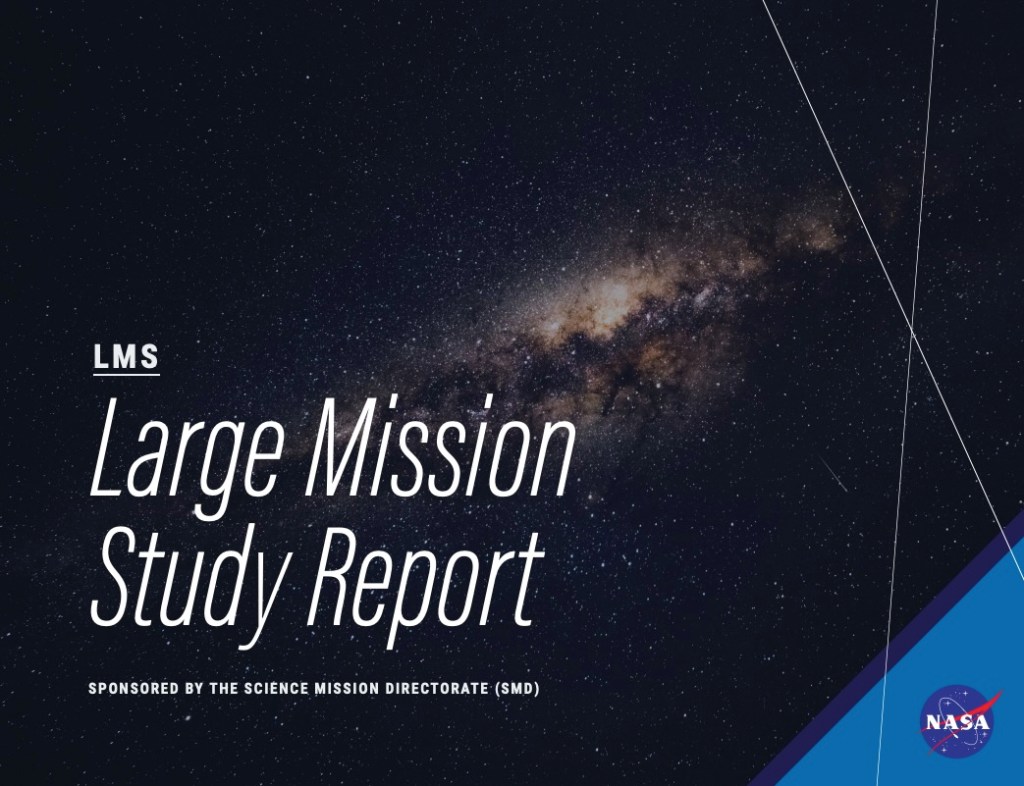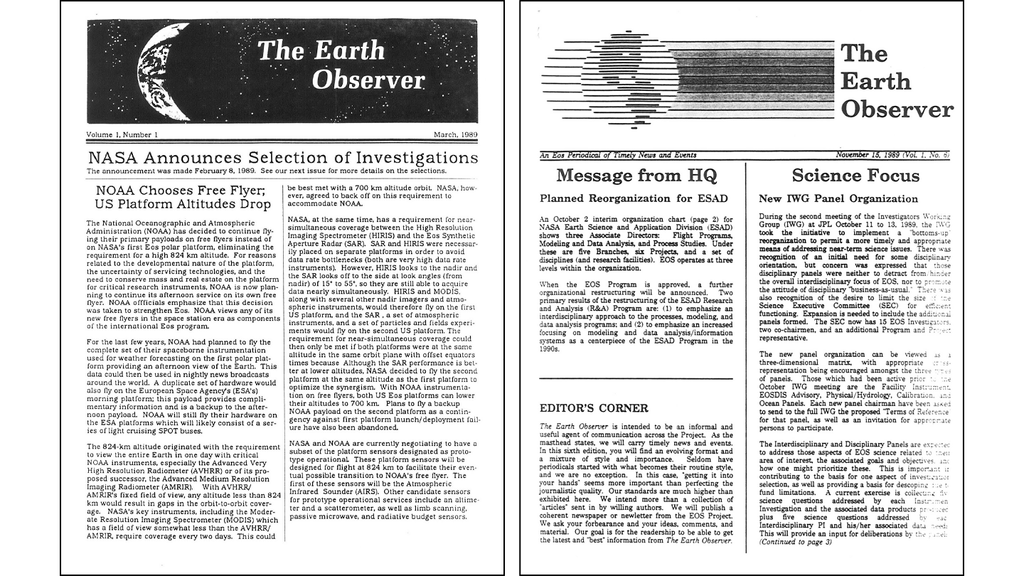NASA's Science Mission Directorate conducts scientific exploration that is enabled by access to space. We project humankind's vantage point into space with observatories in Earth orbit and deep space, spacecraft visiting the Moon and other planetary bodies, and robotic landers, rovers, and sample return missions. From space, in space, and about space, NASA's science vision encompasses questions as practical as hurricane formation, as enticing as the prospect of lunar resources, as surprising as behavior in weightlessness, and as profound as the origin of the Universe. To ensure the success of the space program through generations to come, we must have simple, but compelling, long-term goals and a coherent, thoughtful plans to achieve them.
2025
2025-2026 NASA Science Plan: A Vision for Scientific Excellence
The updates to this existing plan are focused on the inclusion of recent accomplishments rather than significant structural changes. These refinements ensure the plan remains current and reflects recent progress while planning begins for a more comprehensive 4-year update. The forthcoming update will align with the development of the next agency-wide NASA Strategic Plan in 2026, ensuring a cohesive approach to our future priorities and goals.
SMD Large Mission Study
This NASA study, conducted from October 2019 to October 2020, aimed to improve decision-making, management, and review processes within the Science Mission Directorate. The focus was on establishing more achievable commitments for large strategic missions, aligning with SMD's core values of leadership, excellence, integrity, teamwork, and safety. While it primarily addressed SMD's mission management, it may also influence broader agency policies.
Access Report
This historical content may contain outdated information or references that may not reflect current policy or programs.
2023
Science 2020-2024: A Vision for Scientific Excellence - 2023 Update *
We welcome our new Associate Administrator, Nicola J. Fox, in our second update to the Science Plan. This update continues to reflect recent achievements of SMD’s activities and connections within our directorate, across NASA, and among our communities and stakeholders. As we focus on exploration, innovation, and interconnectivity, we are encouraged by the power of science to grow and inspire more diverse and inclusive teams, finding ways to further connect with society and the world. We have increased our intent to extend that culture to strengthen partnerships and drive collaboration, working to further scientific excellence.
2022
The NASA Strategic Plan outlines NASA's vision for the future and provides a clear, unified, and long-term direction for all NASA activities. The strategic plan is the foundation on which NASA will build and measure success and aligns NASA's full spectrum of activities to accomplish national priorities in civil aeronautics research, space exploration, science, and advanced research and development. (7.5 MB)
Science 2020 - 2024: A Vision for Scientific Excellence - FY 21-22 Update
The first major update to the Science Vision, known as the science plan, reflects several important changes. This past year we welcomed the Biological and Physical Sciences Division into SMD, and the plan now includes this community’s important work. Our planet and its climate are profoundly changing, and this plan emphasizes the contributions of NASA’s Earth Science program to understanding climate change and providing information to decision-makers and other agencies. Additionally, we’ve placed a stronger emphasis on inclusion, a new NASA core value and a focus across all priority areas. The plan, arranged by priority areas, provides a brief description of our intentions and high-level objectives associated with each, and speaks to new cross-cutting opportunities, such as SMD’s role to accelerate open data and open-source science. While implementation of the strategies continues to look different between our divisions, we are excited to share the tremendous progress being made across all elements of the portfolio.
2020
SCIENCE 2020 - 2024: A Vision for Scientific Excellence
The Science Vision, colloquially known as the science plan, presents four cross-cutting priorities and accompanying strategies that reflect SMD’s shared values and are directly responsive to changes in the broader ecosystem in which we work. At the core of what SMD does is scientific discovery and exploration and we make progress through innovation, interconnectivity and partnerships, and inspiration. These priorities and strategies are intended to focus attention on those areas where we can have the greatest impact over the next five years.
2018
The NASA 2018 Strategic Plan outlines NASA's vision for the future and provides a clear, unified, and long-term direction for all NASA activities. The strategic plan is the foundation on which NASA will build and measure success and aligns NASA's full spectrum of activities to accomplish national priorities in civil aeronautics research, space exploration, science, and advanced research and development. (6.7 MB)
NASA Guidelines for Promoting Scientific and Research Integrity
NASA Guidelines for Promoting Scientific and Research Integrity NASA has a long history of supporting scientific and research integrity across its technical disciplines and programs. Multiple NASA Policy Directives (NPDs) and NASA Procedural Requirements (NPRs) as well as Federal laws, regulations, and directives address these various aspects of research integrity. This guidebook provides an overarching summary of existing policies, activities, and guiding principles for scientific and research integrity with which NASA’s workforce and affiliates (such as grantees) must conform.
2016
Civic Scientific Literacy in the United States in 2016
The 2016 Civic Scientific Literacy report for the United States provides a brief discussion of the salience of science and technology in the United States, the current level of civic scientific literacy, and how civic scientific literacy has changed over the last three decades. The report also discusses the sources, uses, and impact of civic scientific literacy in a modern society. (213 KB)
2014
The NASA 2014 Science Plan reflects the direction NASA has received from our government's executive branch and Congress, advice received from the nation's scientific community, the principles and strategies guiding the conduct of our activities, and the challenges SMD faces. The science plan that results enables NASA, as stated by NASA Administrator Charles Bolden, to "do the best science, not just more science." (10.4 MB)
2013
The Astrophysics Division of NASA's Science Mission Directorate articulates a long-term plan for scientific exploration of the universe and the search for life beyond the solar system. (10.6 MB)
2011
White House Scientific Integrity Memorandum
Federal agencies are taking steps to share tools and good practices to improve the implementation of scientific integrity policies across the government. Some are incorporating scientific integrity policies into broader frameworks to improve the quality and trustworthiness of scientific research results produced or used by federal agencies.
Ensuring Scientific Integrity at the National Aeronautics and Space Administration
This report discusses scientific integrity as a high priority for NASA and embedded in the rules and requirements that govern professional behavior across all technical disciplines. NASA policies in support of scientific integrity are robust and have been in place for many years. As an Agency, NASA recommits to scientific integrity on a regular basis, by reviewing and renewing existing policies every five years.
Ensuring Scientific Integrity at the National Aeronautics and Space Administration Response
This report describes the policies that the National Aeronautics and Space Administration (NASA) currently has in place to ensure scientific and engineering integrity, the actions that NASA has already taken to extend its assurance, and NASA's plan for additional actions in furtherance of implementing the Administration's policies on scientific integrity.
The report is organized to respond to the four major areas and seventeen sub-areas addressing scientific and engineering integrity that are explicitly addressed in Director of the Office of Science and Technology Policy Dr. John P. Holdren's memo to heads of executive departments and agencies (478 KB).
Cover Letter from NASA Administrator Charles F. Bolden, Jr.
The NASA Strategic Plan embraces the goals articulated in the Vision for Space Exploration and addresses our strategy for reaching them. To ensure the success of the space program through generations to come, this document outlines simple but compelling goals and a coherent plan to achieve these goals. (670.9 KB)
2010
Responding to the Challenge of Climate and Environmental Change
NASA's Plan for a Climate-Centric Architecture for Earth Observations and Applications from Space
A 49-page report on NASA's plans to revitalize the nation's research satellite system; expand research, applications, technology, and education activities using NASA and non-NASA satellite data; and develop/mature technologies required for the next generation of Earth observing missions. (5.0 MB)
The 2010 Science Plan identifies the direction NASA has received from the Administration and Congress, advice received from the nation's science community, principles and strategies guiding the conduct of our activities, and challenges we face. The plan that results enables NASA, as Administrator Bolden says, to "do the best science, not just more science. (2.35 MB)
Past Strategy
The Science Plan for NASA's Science Mission Directorate emphasizes the identification and prioritization of space missions and articulates the research program in detail, as well as describing the research solicitation, advanced technology, data management, and related activities required to achieve NASA's space and Earth science goals. (5.1 MB)
Summary of the 2007 - 2016 SMD Science Plan
A 30 page summary of the Science Plan for NASA's Science Mission Directorate. (1.3 MB)
































